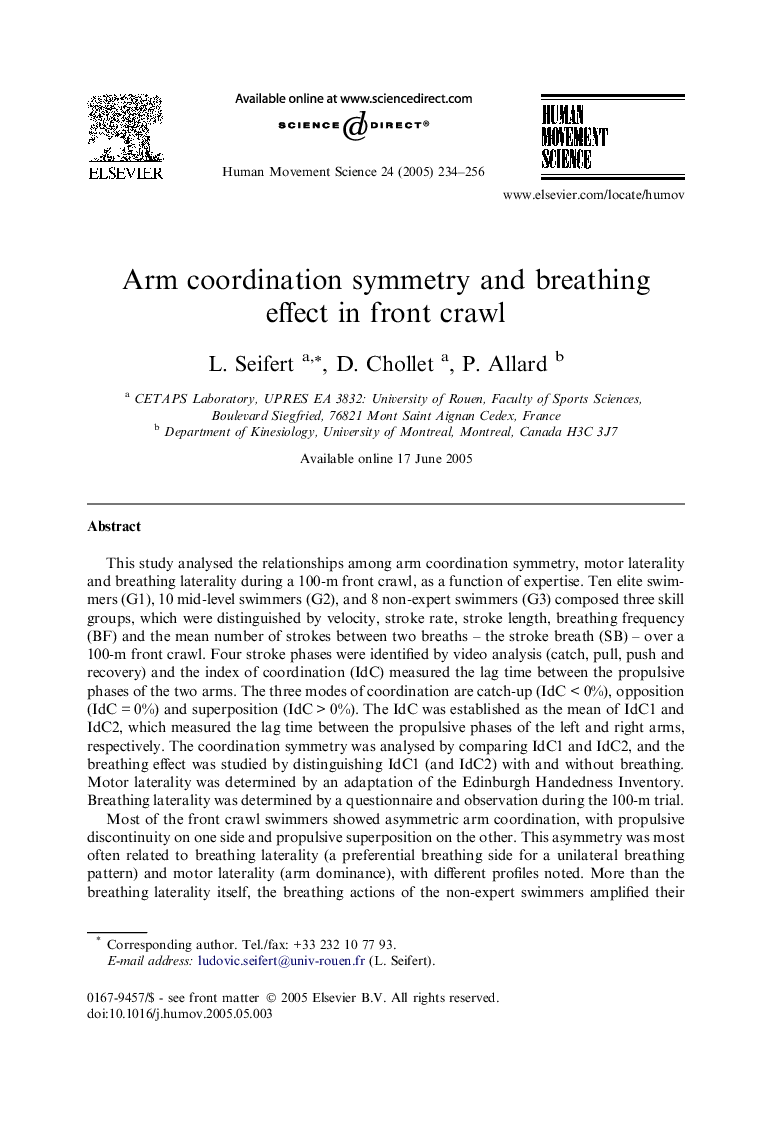| Article ID | Journal | Published Year | Pages | File Type |
|---|---|---|---|---|
| 10459265 | Human Movement Science | 2005 | 23 Pages |
Abstract
Most of the front crawl swimmers showed asymmetric arm coordination, with propulsive discontinuity on one side and propulsive superposition on the other. This asymmetry was most often related to breathing laterality (a preferential breathing side for a unilateral breathing pattern) and motor laterality (arm dominance), with different profiles noted. More than the breathing laterality itself, the breathing actions of the non-expert swimmers amplified their asymmetric coordination on the breathing side. Conversely, the elite swimmers, who had higher and more stable spatial-temporal parameters (velocity and stroke lengths), a high coordination value (IdC) and lower breathing frequency (BF), managed their race better than the less proficient swimmers and their asymmetric arm coordination was not disturbed by breathing actions. By determining the dominant arm and the preferential breathing side, the coach can obtain a swimmer profile that allows both coach and swimmer to better understand and respond to excessive coordination asymmetry.
Related Topics
Life Sciences
Neuroscience
Cognitive Neuroscience
Authors
L. Seifert, D. Chollet, P. Allard,
